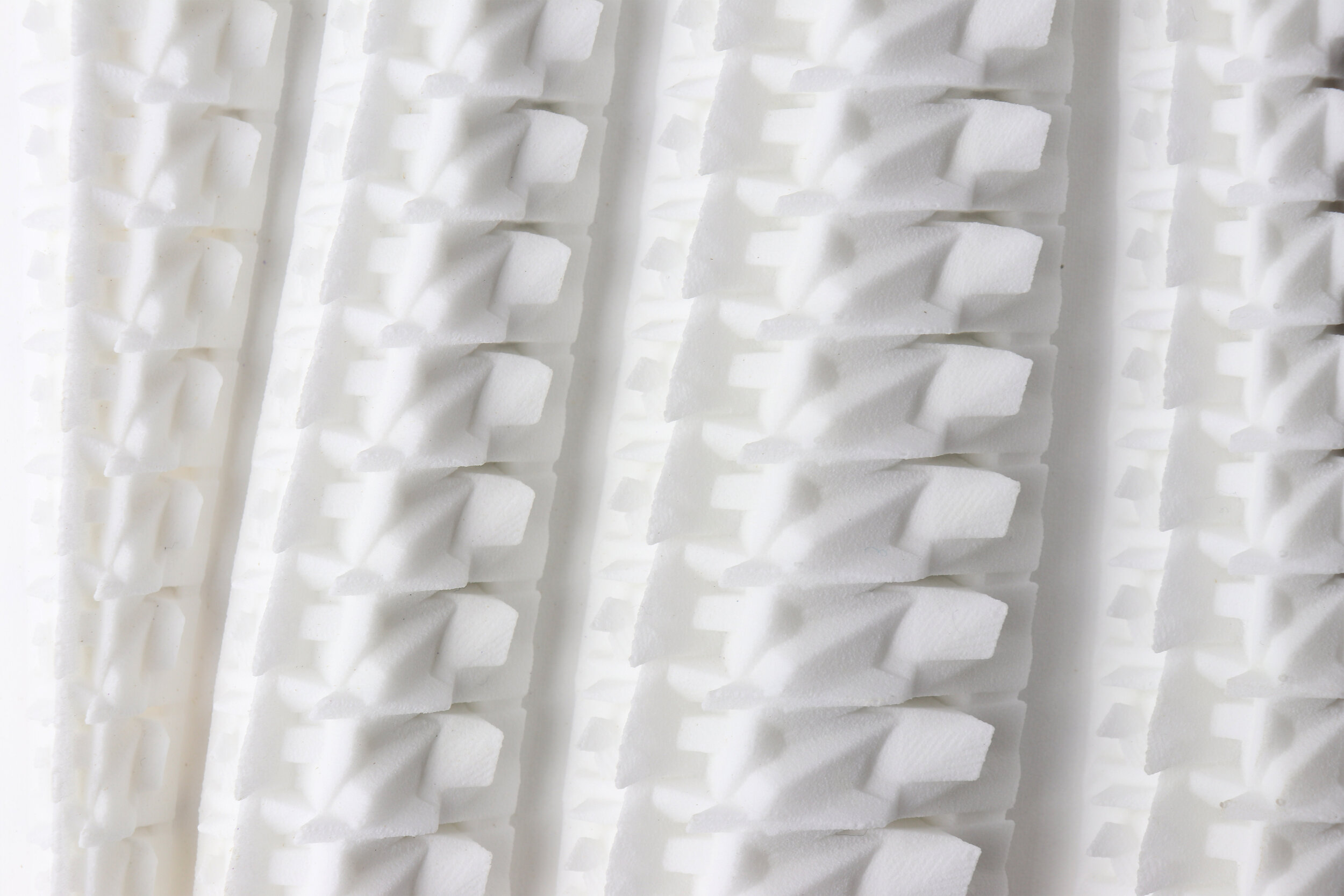
Wave Ripples
Digitally Generated Fabrication, Fall 2019
Tidal flats are one of the many naturally occurring geological bedforms that exist on the surface of the earth. By studying the forces that lead to their creation, perhaps we can apply this same logic to the design of architectural forms, replicating their natural beauty through the built environment.
This project involved in-depth studies of various tools and processes for analyzing and manipulating forms, both digitally and physically. To start, I chose to work with my physical model from the previous project, which I had originally fabricated by casting Rockite cement and soap into an XPS foam form. As part of the study, I translated this model into a digital object through 3D scanning, developed multiple contour and eggcrate models, and also had the object 3D printed in white PLA plastic.
For my final composite model, I studied the process of the formation of wave ripples on coastal tidal flats, a natural phenomenon that is nostalgic for me having grown up by the beach in Massachusetts. In short, I learned that the bidirectional flow of the tidal currents creates circular patterns of movement in the water. The force of the water carries and deposits sand grains into a systematic field of ripples that become compacted over time and loosely take the shape of a sine curve in section. I replicated this process by aggregating my digital model and flowing it along a sine curve surface, which I then transformed using a cage edit to give the ripples a less uniform and more organic shape.
For the final physical representation of this form, I decided to represent the base layer of compacted sand with a simple ⅛” birch plywood eggcrate, which implies the vertical and horizontal movement of the sand over time. The top layer of newly deposited sand is represented through an SLS Nylon 3D print, which captures very fine detail of the aggregation and implies the movement of sand grains over the surface.



More information about bi-directional bedforms (wave ripples)
A rather straightforward byproduct of a regular interaction between a force (i.e., wind, water) and an aggregated bed of countless solid particles (i.e., sand, silt), bedforms are a naturally occurring geological feature that exist in a constant state of flux. Over long periods of time, they become preserved as the characteristic layers of sedimentary rocks. These physical forms act as visible remnants of the sometimes invisible or otherwise unnoticed interactions that occur on the thin surface layer of the earth.
Bedforms come in a variety of shapes and sizes, determined by the “velocity, direction, constancy, and homogeneity of the current, or flow field” (encyclopedia.com). They exist in a range of scales, from the monumental sand dunes of the world’s largest desert landscapes down to the smallest sand ripples of the most relaxed river beds. Some are formed via a continuous, unidirectional flow, such as the current of a river shaping the riverbed. Others are formed through exposure to more irregular flows, such as desert winds that stop, start and change direction to form large dunes.
The ripples found in the sands of coastal tidal flats, particularly evident at low tide, are an interestingly complex case. Here, the bidirectional flow of tidal currents and the orbital motion of waves work to lift and carry sand grains along the surface of the flats. The sand piles up to create natural formations, an organic yet systematic field of ripples that run parallel to the shore. Appearing in plan as crests and troughs, these forms usually take the shape of a sine curve in section, with smooth, periodic oscillation and wavelengths.
While all wave ripple fields are unique, they are formed through the same basic process. In deep water, a wave produces circular, oscillating currents at the surface of the water, which is replicated vertically down to the base of the wave. As the wave moves into shallow water and the base of the wave meets the sand particles of the floor, the circular oscillations are essentially flattened into elliptical oscillations that create the effect of opposing forces. These forces transport the sand back and forth to create symmetrical ripple crests. Various parameters, including the height and length of the waves, and the amplitude of the oscillations, have an impact on the velocity of the force, the magnitude of sand that is displaced and the distance that it travels. (Hakif)
Hakif, Meor. “Symmetrical ripples in wave-dominated environments.” Dusty Drawers, Mar 13, 2014.
“Bedforms (ripples and dunes).” Encyclopedia.com, Oct 1, 2019.
“Wave ripple formation.” Coastal Wiki. Nov 4, 2019.
